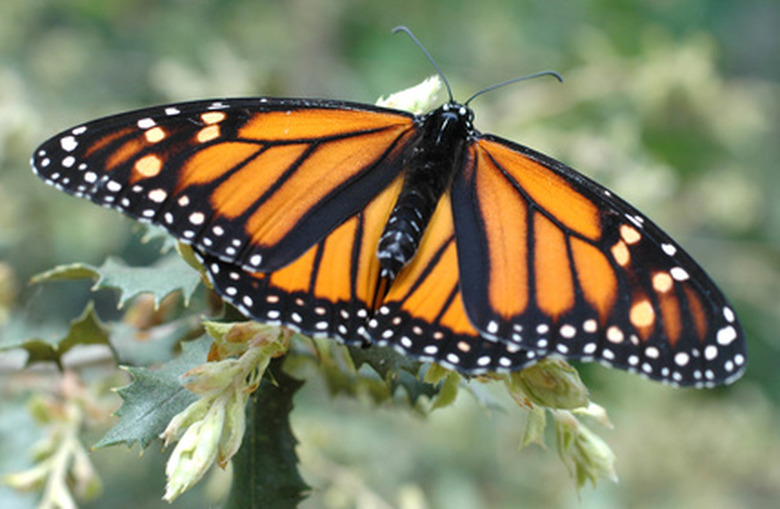Butterfly Weed Vs. Milkweed
Common milkweed and butterfly weed are two species of milkweed that have much in common. Both will attract butterflies to your property, with these plants the main magnet for the orange and black monarch butterfly in particular. Some differences in features exist in the two types of milkweed. You can grow both types of this milkweed on your own, either in your garden or elsewhere on your land.
Differences
Common milkweed exists over much of the United States, while butterfly weed grows mainly east of the Rocky Mountains. Common milkweed has purplish flowers, with the blooms of butterfly weed orange or red, the only kind of milkweed that showcases these colors.
Common milkweed has a milky sap like most types of milkweeds, an aspect of the plant that gives milkweeds their name. However, butterfly weed sap is not milky. The sap is clear, which is unique among the many kinds of milkweeds. Common milkweed grows as high as 5 feet, while butterfly weed is shorter, with most between 1 and 3 feet tall.
- Common milkweed and butterfly weed are two species of milkweed that have much in common.
- Common milkweed has a milky sap like most types of milkweeds, an aspect of the plant that gives milkweeds their name.
Similarities
Both butterfly weed and common milkweed produce relatively large seedpods, which contain a seed attached to a minute piece of silky "hair." The pods break open in the fall and release the seeds, which the winds then spread throughout the countryside. The two species flower about the same time, from June into late August or early September. In the wild, both flourish in old fields, waste places and open woodlots.
Effects
Butterfly weed has some medicinal value, as the Floridata website notes. The Native Americans would employ it to treat pulmonary ailments such as pleurisy, which gave it the nickname of pleurisy root. It supposedly helps alleviate the presence of mucus in the bronchial tubes and lungs. Common milkweed, according to the "National Audubon Field Guide to Wildflowers", contains cardiac glycosides which help treat heart disease. The monarch butterfly absorbs these from the plant, which in turn makes them toxic to predators such as birds.
- Both butterfly weed and common milkweed produce relatively large seedpods, which contain a seed attached to a minute piece of silky "hair." Common milkweed, according to the "National Audubon Field Guide to Wildflowers", contains cardiac glycosides which help treat heart disease.
Growing Common Milkweed
Be patient with common milkweed as it takes two years typically before blooming once it develops. Purchase the seeds or the plants from your local nursery or cut the tuberous roots when the plant enters its dormant stage. Place the roots in the ground before the latter portion of fall so they have a chance to gain some sort of foothold before winter arrives. Put common milkweed where it may fan out and spread without becoming invasive to your other plants. A dry area is well suited for common milkweed, as long as you remember to water it.
Growing Butterfly Weed
Butterfly weed will behave and not expand its territory, so you can utilize it closer to other plants without worrying about it overwhelming them. Plant its seeds in the fall or spring but if dividing its tuberous root and planting it, do so in the springtime. Mark where you place them, as butterfly weed is often very slow to emerge. Take into account that you want to place the plants to give you a clear view of the butterflies that come to sip the nectar of the flowers.
- Be patient with common milkweed as it takes two years typically before blooming once it develops.
- Mark where you place them, as butterfly weed is often very slow to emerge.
References
- Floridata:Butterfly Weed
- Science Views:Common Milkweed
- "National Audubon Society Field Guide to Wildflowers"; John Thieret: 2008
